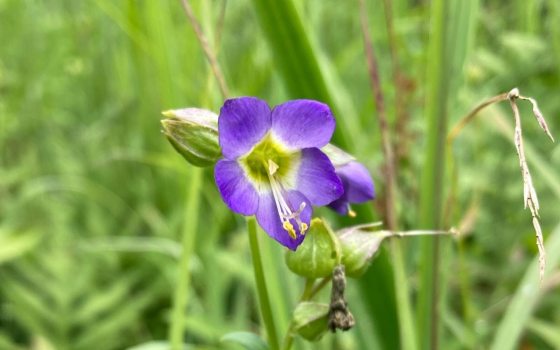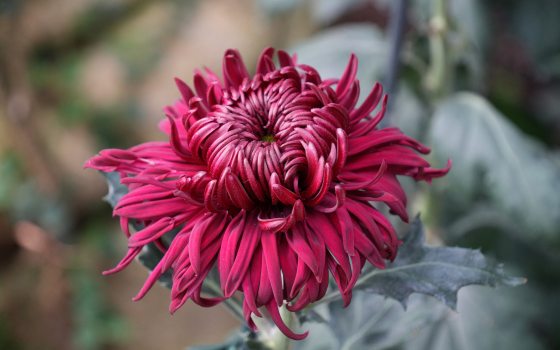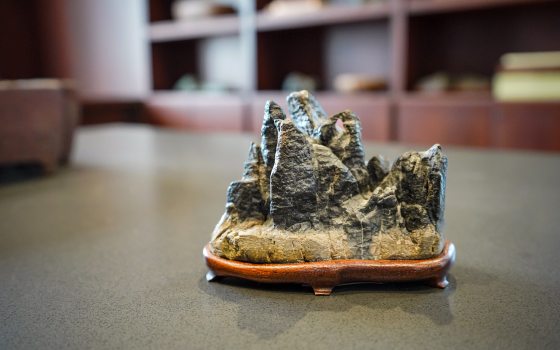With a rich history of preservation, land stewardship, and horticulture, our Gardens inspire and bring joy to all through the beauty of nature, conservation, and learning—and as part of that mission we constantly strive to safeguard local endangered species and inform the future of rare plant conservation efforts. The importance of this is innumerous, as part of taking in the often-fragile beauty of nature is knowing how to protect it. Among our many conservation efforts is our recent work in propagating and restoring hundreds of one of the rarest plants in Pennsylvania, the Appalachian Jacob’s ladder (Polemonium vanbruntiae). A native perennial wildflower found sporadically in high-elevation wetlands, there are only seven known small populations of Appalachian Jacob’s ladder in Pennsylvania—we are working hard to make sure that all survive for future generations.
This elusive wildflower is tall with loose clusters of blue-violet bell-like flowers and protruding stamens is named for its well-separated, parallel leaves, giving them the look of a “ladder.” In the cool, moist ecosystem where it grows, the Appalachian Jacob’s ladder is heavily affected by deer browse, past mining and logging operations, acid rain, flooding from dam construction, and a changing climate. While considered rare and vulnerable across its native range from Quebec to Maryland, in Pennsylvania the species is critically imperiled with a high risk of extinction. It is also globally rare, meaning the species only grows naturally in the Northeast region of the US, making restoring its populations even more critical.

The beautiful blue-violet bell-like blooms of the Appalachian Jacob’s ladder. Notice the yellow centers with protruding stamens and stigmas. The tall wildflower can reach up to a meter in height and flowers in early July. Photo by Peter Zale.
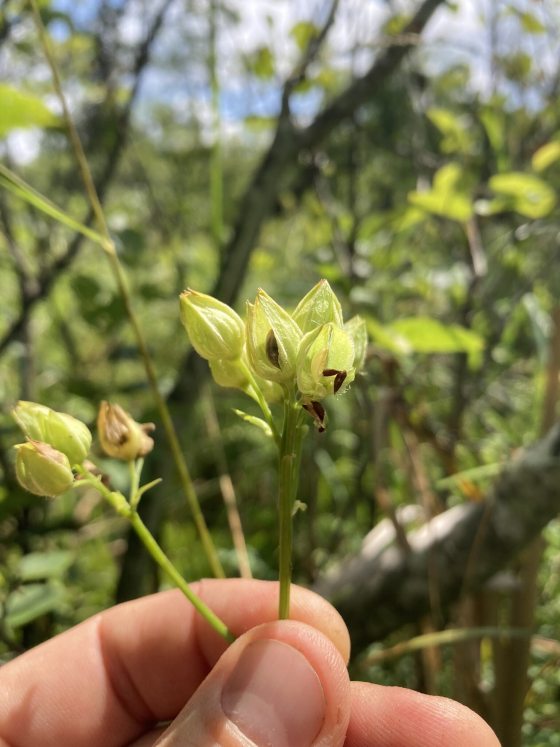
The seeds of the Appalachian Jacob’s ladder are enclosed in bright green, bud-like bracts. When the seeds are mature they begin to dehisce, or burst open, as seen in the image. Photo by Peter Zale.
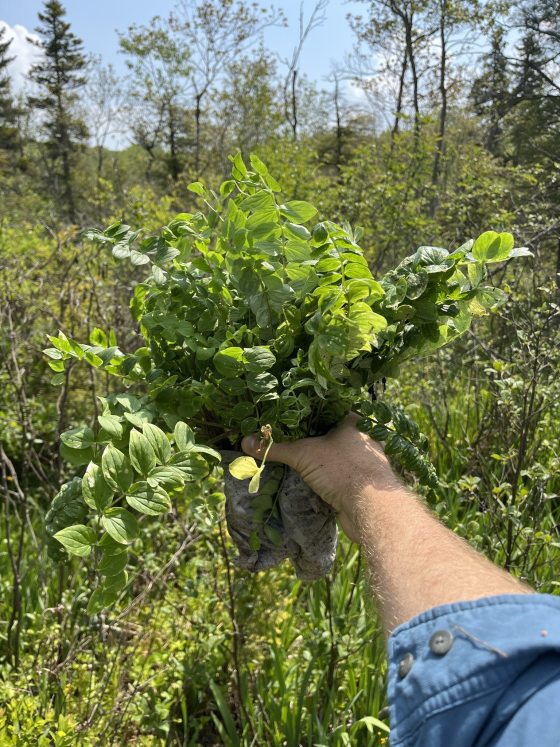
A handful of Appalachian Jacob’s ladder ready to be planted back into its native habitat. Notice their parallel leaf pattern, giving that “ladder” look. Photo by Peter Zale.
Conservation of Appalachian Jacob’s ladder is important for several reasons, some of which we know, and others remain a mystery to be solved. The plant represents a direct—but fragile—link to a precolonial North American landscape that has largely been destroyed or altered over hundreds of years. Its continued existence in small, isolated populations has the potential to inform us about the impact humans have had on this landscape while providing clues for how to improve and diversify similar, but degraded ecosystems. With preserving a plant comes demystifying its role in the area where it grows—we can now learn a lot more about how this plant fosters and provides for pollinators and interacts with other native flora and fauna. Beyond the research potential of this plant, it is their beauty, uniqueness, and rarity that draws our Conservation Horticulture and Collections team to safeguard the current populations of Appalachian Jacob’s ladder through a variety of seed collection and conservation horticulture research activities.
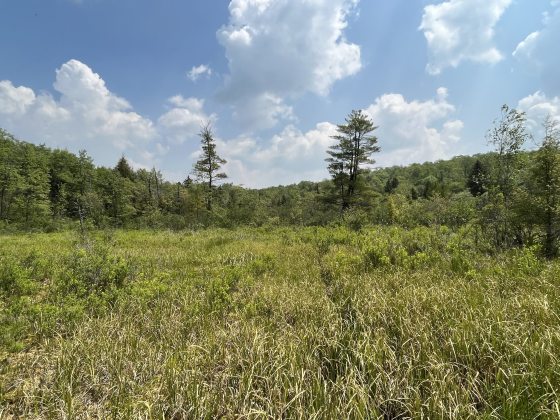
This Sullivan County, Pennsylvania swamp is a perfect example of a native habitat for Appalachian Jacob’s Ladder (Polemonium vanbruntiae)—cool and moist soil conditions in the Northeast region of the US. Photo by Peter Zale.
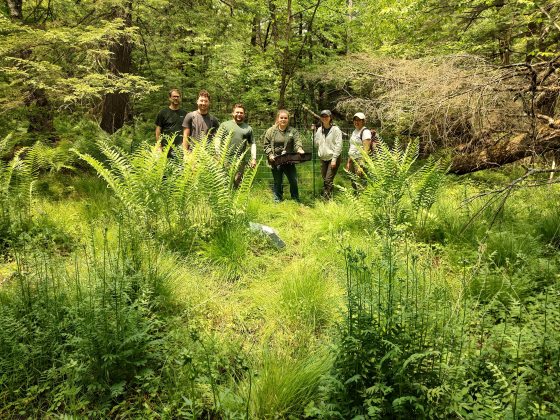
The Conservation Horticulture and Collections team planting group, surrounded by Appalachian Jacob’s ladder. Photo provided by Peter Zale.
In 2022, the Pennsylvania Plant Conservation Alliance—which works to conserve and steward the rarest plant species in the state—approached Longwood to help conserve these plants through a multi-faceted, ex situ approach with horticulture at its foundation. As a result, over the last year, members of our Conservation Horticulture and Collections team have been working with the PPCA to safeguard—and grow—current populations of Appalachian Jacob’s ladder.
In August 2022, we collected seeds from two wild Appalachian Jacob’s ladder populations in Sullivan County, PA and brought them back to Longwood to conduct an intensive seed germination study. Prior to this work, seed germination requirements for this species were little known. At this time, we are in the “getting to know you” stage with Appalachian Jacob’s ladder—getting a feel for how it can adjust to our nursery and growing facilities. Will they adapt to summertime heat? What planting containers do they seem to prefer? So far, we know they love to be in pots in our greenhouse!
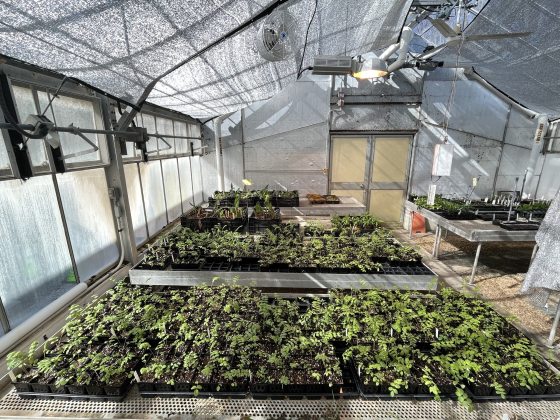
Appalachian Jacob’s ladder seedlings growing in our greenhouse. Photo by Peter Zale.
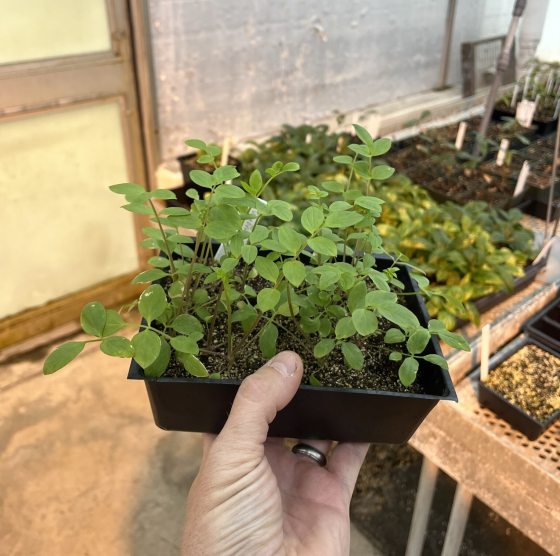
A close view of our Appalachian Jacob’s ladder seedlings, thriving in our greenhouse. Photo by Peter Zale.
From collecting their seeds, to researching seed germination requirements, to growing hundreds of these plants here at Longwood, our Appalachian Jacob’s ladder restoration efforts are moving very quickly in the world of conservation. A pleasant surprise of working with this species—and one we did not predict—was how easily the seeds germinated with the right treatment and the relatively high rate of viability of the seeds. We had a lot of seedlings to work with and support our initial horticultural trials. The sheer number of seedlings and their unexpected rapid growth meant that within a few months of completing our seed germination studies, we had over 400 vigorous seedlings in 3-inch pots ready to support conservation efforts and horticultural trials. To put this in perspective, a lot of our previous and ongoing conservation efforts involved slow-growing native orchids, where seed germination projects and subsequent growth of the plants are often measured in years or decades, compared to a few months.

Hamilton Fellow at Jenkins Arboretum and former Conservation Horticulture Intern at Longwood Nate Braddock, Longwood Research Specialist Jameson Coopman, and Pennsylvania Plant Conservation Alliance Coordinator Cheyenne Moore on the way to planting Appalachian Jacob’s ladder in Sullivan County. Photo provided by Peter Zale.
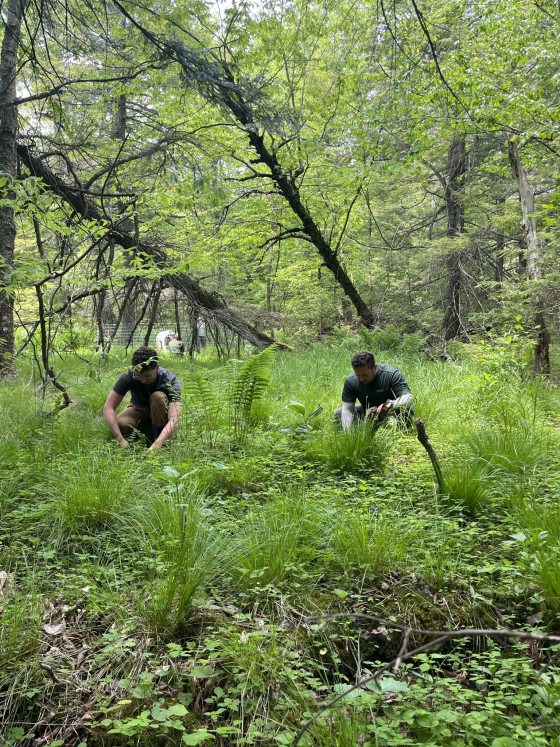
Nate Braddock and Jameson Coopman plant Appalachian Jacob’s ladder back into their native habitat. Photo provided by Peter Zale.
With Appalachian Jacob’s ladder a globally rare species, there is an importance to bring our work back into the wild. In early June, our team worked with the PPCA to plant 175 of the plants grown here back into the Sullivan County swamps from which the seed was originally collected to supplement the growth and the survival of the plant for generations. Additional plants grown via this project will be planted here at Longwood for further horticulture evaluation and for possible future display.
With a potential for future display in our Gardens, the conservation of Appalachian Jacob’s ladder opens the door for more restoration of wild populations. Longwood has since expanded our work with the PPCA and have begun the process of safe-guarding other rare species in Pennsylvania—Kate’s Mountain Clover (Trifolium virginicum), Canby’s Mountain Lover (Paxistima canbyi), Spreading Rockcress (Arabis patens), and more. Data from studies like this are critical to plant conservation efforts within Pennsylvania and will be stored in the Center for Plant Conservation restoration database with the hopes that it can inform related rare plant conservation projects among other organizations and in related efforts—in hopes that those efforts continue for generations to come.
